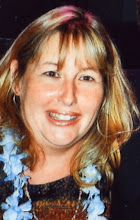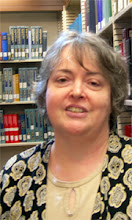
Early Tech Support
All of these characteristics, in the current educational climate allow faculty members, librarians, instructional technologists and students to play very active roles in designing education that works.
We are in transition. It is not the first.
The Evolving Model
1960
Faculty member comes to library. Says to librarian, I am teaching History 250 this semester. Here is a list of the materials I would like put on reserve.
1970-1980 Faculty member comes to library, says I am teaching History 250 this semester. Here is a list of materials I would like to put on reserve. The students will be writing a research paper. Could you do a workshop for them that will help them get started? Librarian may ask faculty member for more specifics about what she would like to students to know about research. Librarian does a one hour workshop in the library and gives the students a handout of resources.
Early 1990 Faculty member comes to library. Says I am teaching History 250 this semester. Here is the reserves list. Could you do a workshop? I also want the students to learn word processing. Librarian collaborates with someone from IT
Late 1990. Teaching 250 again. Want the reserves to be in electronic format. Want the students to work together to prepare a cd about Mary Shelley’s Frankenstein and the milieu in which it was created. Goes to librarians, but forgets the IT people. Students show up in the labs. Instructional Technologists do not know they are coming. Chaos. Students in tears. Librarians and IT people meet with faculty member to smooth things out and better coordinate the work.
The present day:
Faculty member has moved past cd’s and wants students to learn to create historical documents on the web. In planning the course, he meets with the librarian and instructional technologist to help select resources, tools and determine approach. Together they choose to use the college archives, the web, and GIS. Before, during and after the class, the group works together. They add student assistants from the class and from the library/it units as needed. The librarian and the instructional technologist are granted access to the faculty member’s course web pages so that they can add materials as needed.
The Historical Atlas Project
Faculty member comes to library. Says to librarian, I am teaching History 250 this semester. Here is a list of the materials I would like put on reserve.
1970-1980 Faculty member comes to library, says I am teaching History 250 this semester. Here is a list of materials I would like to put on reserve. The students will be writing a research paper. Could you do a workshop for them that will help them get started? Librarian may ask faculty member for more specifics about what she would like to students to know about research. Librarian does a one hour workshop in the library and gives the students a handout of resources.
Early 1990 Faculty member comes to library. Says I am teaching History 250 this semester. Here is the reserves list. Could you do a workshop? I also want the students to learn word processing. Librarian collaborates with someone from IT
Late 1990. Teaching 250 again. Want the reserves to be in electronic format. Want the students to work together to prepare a cd about Mary Shelley’s Frankenstein and the milieu in which it was created. Goes to librarians, but forgets the IT people. Students show up in the labs. Instructional Technologists do not know they are coming. Chaos. Students in tears. Librarians and IT people meet with faculty member to smooth things out and better coordinate the work.
The present day:
Faculty member has moved past cd’s and wants students to learn to create historical documents on the web. In planning the course, he meets with the librarian and instructional technologist to help select resources, tools and determine approach. Together they choose to use the college archives, the web, and GIS. Before, during and after the class, the group works together. They add student assistants from the class and from the library/it units as needed. The librarian and the instructional technologist are granted access to the faculty member’s course web pages so that they can add materials as needed.
The Historical Atlas Project
Current Examples
• International relations faculty member believes that the movement to the web is as great a paradigm shift as the move to print. He does not ask his students to write papers. They build “position” multimedia web pages about a controversial topic. One student’s paper was chosen by LC as a good example of study on Darfour.
www.mtholyoke.edu/~rmsposat/index.html
• Anthropology faculty member wants his students to understand how communities of scholars evolve beginning with one seminal thinker’s work.
www.mtholyoke.edu/~mglackin/roth.jpg
• English faculty member wants his students to learn to write for each other, not for “the teacher.”
www.mtholyoke.edu/lits/assets/lits/writingtools.pdf
•Genetics faculty member wants his students to learn to use the NCBI NLM Toolkit on the genome project to develop new bioinformatics research.
www.ncbi.nlm.nih.gov
•Gender studies faculty member wants her students to find their public voices.
http://www.mtholyoke.edu/proj/womenspublicvoices/
•Developmental Biology faculty member wants her advanced students to learn to develop Time-lapse video microscopy of cell rearrangements in fish embryos; embryonic cell migration—in vivo and in vitro (especially in sea urchins); the role of extracellular matrix in embryonic cell movements and to make their work available to students in less advanced courses.
http://www.mtholyoke.edu/courses/rfink/
• English faculty member wants his undergraduates to think about the relations among digital media and their predecessors in the hand-press and manuscript eras:
http://faculty.goucher.edu/eng241/
• Art history faculty member wants his students to learn how to use tools in the study of architecture
http://www.mtholyoke.edu/courses/thjermst/amp
•Film Studies Faculty member wanted to collect references in cultural media back to Alfred Hitchcock
http://www.mtholyoke.edu/~thjermst/susanBlog.jpg
www.mtholyoke.edu/~rmsposat/index.html
• Anthropology faculty member wants his students to understand how communities of scholars evolve beginning with one seminal thinker’s work.
www.mtholyoke.edu/~mglackin/roth.jpg
• English faculty member wants his students to learn to write for each other, not for “the teacher.”
www.mtholyoke.edu/lits/assets/lits/writingtools.pdf
•Genetics faculty member wants his students to learn to use the NCBI NLM Toolkit on the genome project to develop new bioinformatics research.
www.ncbi.nlm.nih.gov
•Gender studies faculty member wants her students to find their public voices.
http://www.mtholyoke.edu/proj/womenspublicvoices/
•Developmental Biology faculty member wants her advanced students to learn to develop Time-lapse video microscopy of cell rearrangements in fish embryos; embryonic cell migration—in vivo and in vitro (especially in sea urchins); the role of extracellular matrix in embryonic cell movements and to make their work available to students in less advanced courses.
http://www.mtholyoke.edu/courses/rfink/
• English faculty member wants his undergraduates to think about the relations among digital media and their predecessors in the hand-press and manuscript eras:
http://faculty.goucher.edu/eng241/
• Art history faculty member wants his students to learn how to use tools in the study of architecture
http://www.mtholyoke.edu/courses/thjermst/amp
•Film Studies Faculty member wanted to collect references in cultural media back to Alfred Hitchcock
http://www.mtholyoke.edu/~thjermst/susanBlog.jpg
Conclusion
In a recent New York Times OP/ED piece, David Brooks says “People are anxious about fragmentation and longing for cohesion.” I believe this is also true to in higher education. I also believe that librarians and instructional technologists are now working in closer collaboration with the faculty because the new technologies, courseware management systems and electronic information demand it. Perhaps the technology will drive us toward cohesion many of us have sought during our careers.
Several years ago, a Biology Faculty member at Mount Holyoke said to me “Sandy Ward is the glue that holds the sciences together.” Sandy was the science librarian. I felt then that that was just about the nicest thing a faculty member could say about a librarian. Now, I would like to hear the faculty members say, the instructional technologists and the librarians are the glue that hold teaching and learning together on our campuses!
Several years ago, a Biology Faculty member at Mount Holyoke said to me “Sandy Ward is the glue that holds the sciences together.” Sandy was the science librarian. I felt then that that was just about the nicest thing a faculty member could say about a librarian. Now, I would like to hear the faculty members say, the instructional technologists and the librarians are the glue that hold teaching and learning together on our campuses!
Subscribe to:
Posts (Atom)



